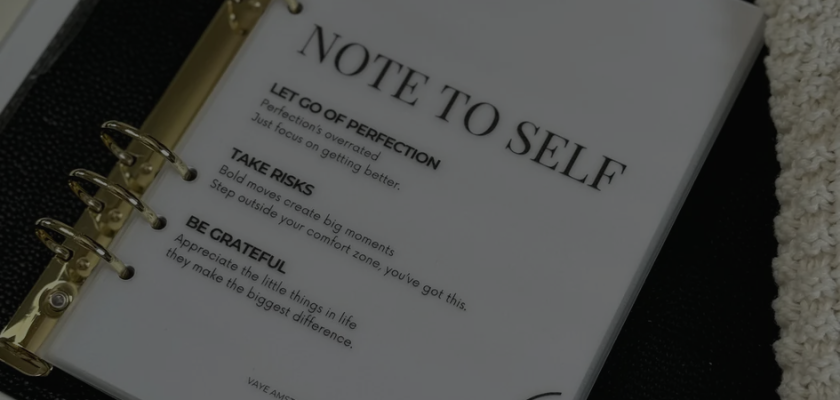
30-Day Savings Challenge: Spend Less, Save More
Share
Saving. We all know it's good for us, but why does it sometimes feel so difficult? Maybe because we think we suddenly have to give everything up —no more coffee, never eat out again, and stop doing fun things. But saving doesn't have to be so dramatic!
With this 30-day savings challenge, I'll show you how to make small, simple adjustments to your daily spending without sacrificing your enjoyment of life. Every day, you'll be given a small task to help you manage your money more consciously, and by the end of the month, you'll have saved a nice amount—without the pain!
Why a 30-day challenge works
Okay, why 30 days? Simple: changing habits takes time . Trying to change everything in one day feels like a diet: you might stick with it for a week, but then you'll fall back into your old ways.
With this challenge, you'll gradually build a new financial system . Small actions lead to big changes in the long run. And the best part? It works for everyone! Whether you want to save €50 a month or build a buffer for a major purchase, you decide how far you go.
The 30-Day Savings Challenge: Daily Tips
Ready to get started? Here's your daily plan. Choose what works for you and adjust it as needed!
Week 1: the basics
We start by gaining insight into your expenses and some simple saving tactics.
- Set a savings goal → What do you want to achieve? An emergency fund, a vacation, or simply more financial peace of mind? Write it down!
- Track all your expenses → Use an app or a notebook and write down EVERYTHING you spend. This is often an eye-opener!
- Eliminate unnecessary subscriptions → Netflix, Spotify, fitness apps, magazines – do you really use them? Cancel what you don't need.
- Turn on automatic savings → Let your bank automatically transfer a small amount to your savings account every week.
- No coffee or snacks outside the home for a week → That €3 a day may not seem like much, but imagine how much you save each month!
- Plan your meals for the week → This way you avoid impulse purchases in the supermarket and save on ordering food.
- No-spend day → Spend absolutely nothing today (except for fixed expenses). This will help you manage your spending more consciously.
Tip: use a budget planner for a financial overview
Week 2: smarter shopping and saving at home
This week we'll focus on your daily expenses.
- Make a shopping list and stick to it → Prevents unnecessary purchases.
- Buy store brands instead of A-brands → Often just as good quality, but much cheaper.
- Don't go to the supermarket hungry → There's a good chance that you'll end up buying more (and more expensive) things.
- Cook larger portions and freeze meals → Save money and time!
- Check your inventory before you go grocery shopping → Prevents you from unnecessarily buying things you already have.
- Do an energy check at home → Turn off lights, unplug plugs and check that you are not using too much fuel.
- Make a list of free outings and activities → Not everything that's fun has to cost money!
Tip: take inventory of your supplies and use up leftovers.
Week 3: Creative saving and getting more out of your money
Time to think outside the box and make smart use of what you already have.
- Sell stuff you don't use → Clothes, gadgets, furniture – make money from things that are gathering dust!
- Exchange or borrow instead of buying → Think of books, tools or clothing.
- Use discount codes and cashback apps → Save on every purchase.
- Set a limit on impulse spending → For example: "I am allowed to spend a maximum of €20 per month on impulse purchases."
- Negotiate your phone or internet subscription → You can often get a better deal if you just call.
- Do a DIY project instead of buying something new → Make your own gifts or spruce up old furniture.
-
Save on transport → Cycle more often, carpool or look for public transport discount promotions
Also read: Save with Project Pan
Week 4: Focus on Long-Term Savings
How do you ensure that your savings behavior is sustainable?
- Set up a savings challenge → Try the €5 challenge or the 52-week savings challenge .
- Learn to say no to unnecessary expenses → That cute dress? Maybe not necessary after all.
- Check your insurance and compare prices → You can often get a cheaper deal somewhere else.
- Go a week without takeout or restaurant food → Cook for yourself and see how much you save.
- Use a reusable water bottle and bring a lunch → Small amount per day, big difference per month.
- Analyse your expenses and see where you can save even more → What small things can you still cut?
- Do a financial detox: don't spend anything for 3 days → Only fixed costs, nothing else.
- Reward yourself for your efforts (but budget-proof!) → You deserve it!
- Make a plan to maintain your savings habits → What worked best? Make it a habit!
💡 Also read: 5 cash stuffing challenges to save quickly
How do you keep this up after the challenge?
Congratulations! You've spent 30 days consciously working on your financial future. But how do you ensure you keep doing it?
- Reflect: What worked well? What didn't?
- Set a new savings goal: Now that you know how easy saving can be, what's your next financial challenge?
- Keep challenging yourself: Take on a new challenge, such as the 12-month challenge
Conclusion: saving can be fun!
See? You really don't have to give up everything to save more money. With small adjustments and clever tricks, you can save a lot without compromising your quality of life .
Have you tried this challenge? Let us know in the comments or share your best money-saving tip! 🚀💰
Want more tips? Sign up for our newsletter and receive a free 30-day savings tracker in your inbox! 📩🎯
